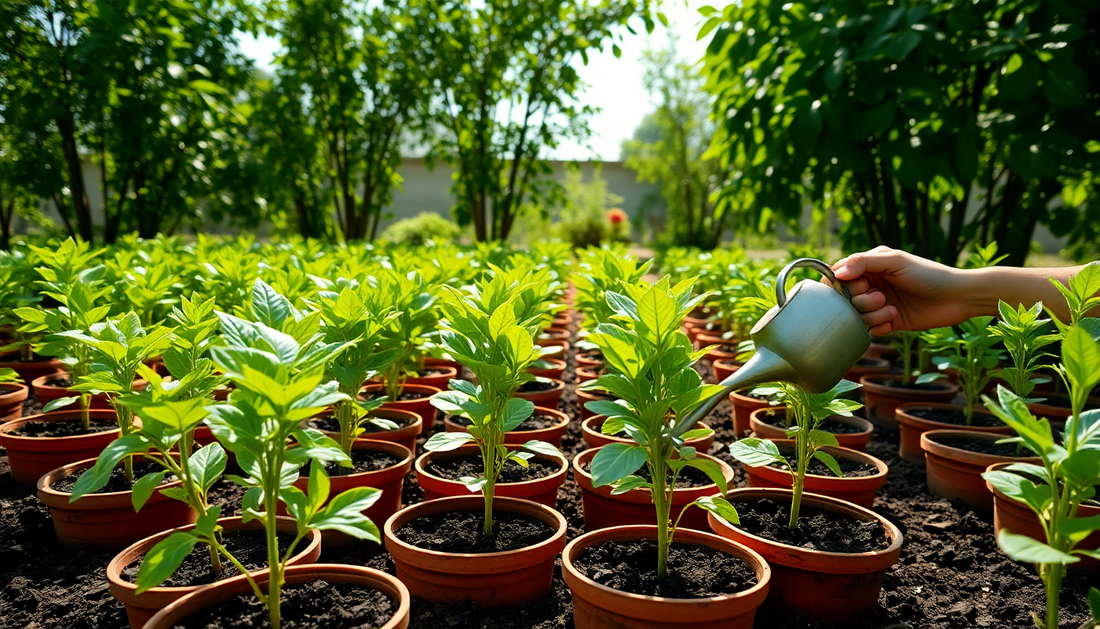
Nurturing Young Curry Leaf Saplings: A Guide to Healthy Growth
Curry leaves, a staple in Indian cuisine, are not only flavorful but also packed with numerous health benefits. As a gardener, you may be eager to cultivate your own curry leaf plant, but caring for young saplings can be a delicate task. In this comprehensive guide, we'll explore the essential steps to ensure your curry leaf saplings thrive and provide a bountiful harvest.
Understanding the Curry Leaf Plant
The curry leaf plant, scientifically known as Murraya koenigii, is a tropical evergreen shrub native to India and Sri Lanka. It belongs to the Rutaceae family, which includes other aromatic plants like citrus fruits. Curry leaves are prized for their distinct aroma and flavor, which can elevate any dish they are added to.
Characteristics of Curry Leaf Saplings
Curry leaf saplings are delicate and require special attention during their early stages of growth. They typically have small, tender leaves and a slender stem. The leaves may have a reddish or purplish hue, which is a natural characteristic of young plants.
Preparing the Planting Site
Choosing the right location for your curry leaf saplings is crucial for their successful growth. Here are some factors to consider:
Soil Conditions
Curry leaves thrive in well-draining, nutrient-rich soil. Avoid heavy, clay-based soils, as they can lead to waterlogging and root rot. Instead, opt for a soil mix that is slightly acidic, with a pH between 5.5 and 7.0.
Sunlight Requirements
Curry leaf plants require ample sunlight, preferably 6 to 8 hours of direct sunlight per day. Choose a spot that receives a good amount of sunlight throughout the day, such as a south-facing or west-facing location.
Drainage
Ensure that the planting site has proper drainage to prevent the soil from becoming waterlogged. If your soil has poor drainage, consider raising the planting bed or adding organic matter to improve the soil structure.
Planting and Transplanting Curry Leaf Saplings
When it comes to planting and transplanting curry leaf saplings, timing and technique are crucial.
Obtaining Healthy Saplings
Purchase your curry leaf saplings from a reputable nursery or garden center. Inspect the plants carefully, looking for signs of pests, diseases, or any physical damage.
Planting Time
The best time to plant curry leaf saplings is during the spring or early summer, when the weather is warm and the soil is moist. Avoid planting during the peak of summer or in the middle of winter, as the plants may struggle to establish themselves.
Transplanting Procedure
If you're transplanting your curry leaf saplings, do so during the cooler months, such as spring or fall. Gently remove the plant from its current container, being careful not to damage the roots. Dig a hole in the new planting site that is slightly larger than the root ball and plant the sapling at the same depth as it was in the previous container.
Caring for Young Curry Leaf Saplings
Proper care and maintenance are essential for the healthy growth of your curry leaf saplings. Here are the key aspects to consider:
Watering
Curry leaf plants require consistent moisture, but they are also sensitive to overwatering. Water the saplings regularly, keeping the soil moist but not waterlogged. Adjust the watering frequency based on the weather conditions and soil moisture levels.
Fertilization
Curry leaf plants benefit from regular fertilization to support their growth and development. Use a balanced, slow-release fertilizer or a compost-based organic fertilizer, and apply it according to the manufacturer's instructions.
Pruning and Trimming
Regularly prune and trim your curry leaf saplings to encourage bushier growth and prevent the plant from becoming leggy. Remove any dead or damaged leaves and stems, and shape the plant as desired.
Pest and Disease Management
Keep an eye out for common pests and diseases that may affect your curry leaf saplings, such as aphids, scale insects, or fungal infections. Address any issues promptly to prevent them from spreading and damaging the plant.
Harvesting and Enjoying Your Curry Leaves
As your curry leaf saplings mature, you'll be able to start harvesting the flavorful leaves. Typically, you can begin harvesting the leaves once the plant is at least 1 year old and has established a strong root system.
When harvesting, gently pluck the leaves, taking care not to damage the stems or the overall plant structure. Use the leaves fresh in your cooking or preserve them for later use by drying or freezing.
Enjoy the vibrant aroma and flavor of your homegrown curry leaves, knowing that you've nurtured them from delicate saplings to thriving plants.
Conclusion
Caring for young curry leaf saplings requires patience and attention to detail, but the rewards are well worth the effort. By following the guidelines outlined in this guide, you can ensure your curry leaf plants thrive and provide you with a bountiful harvest for years to come. Happy gardening!







No comments